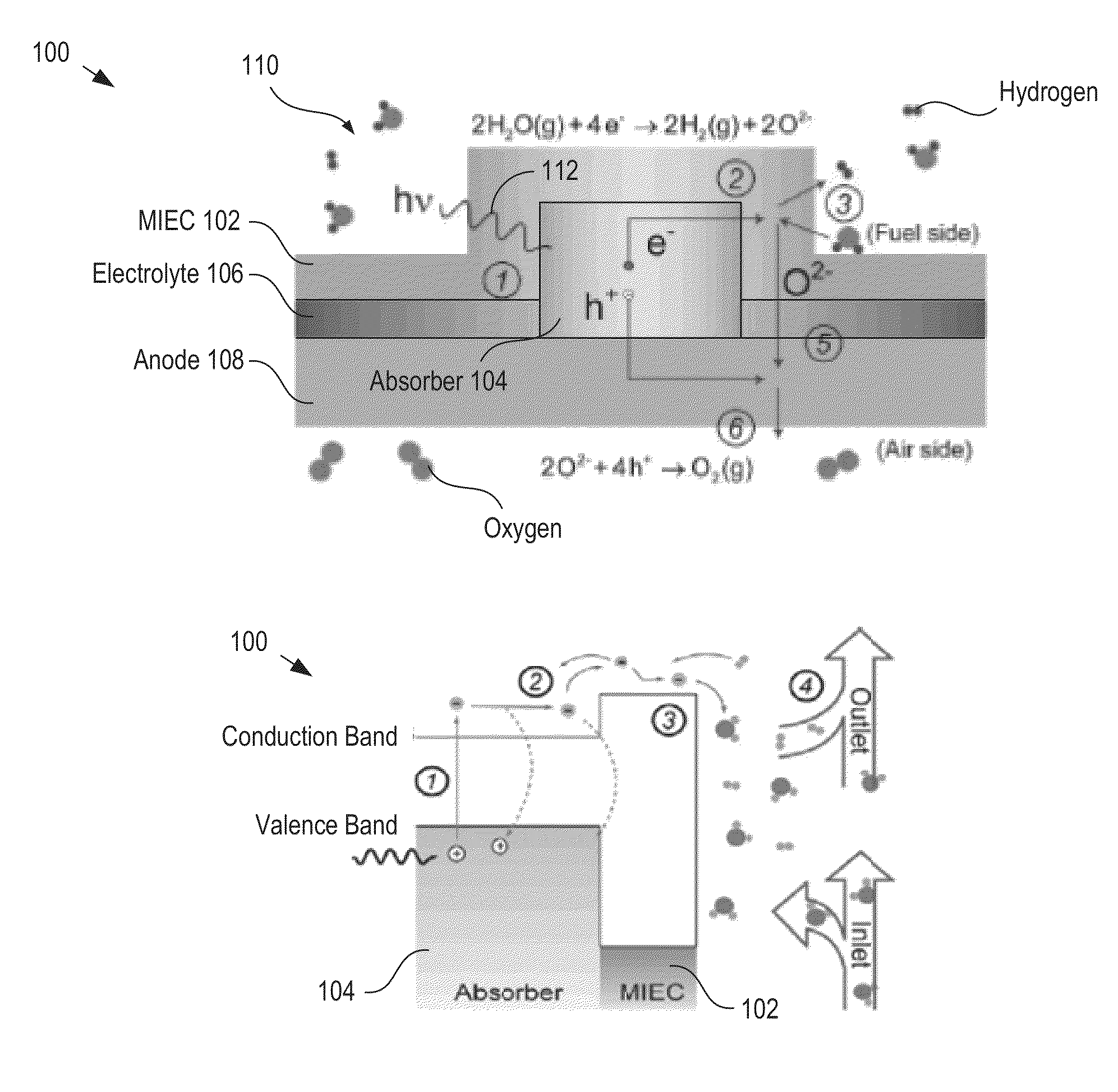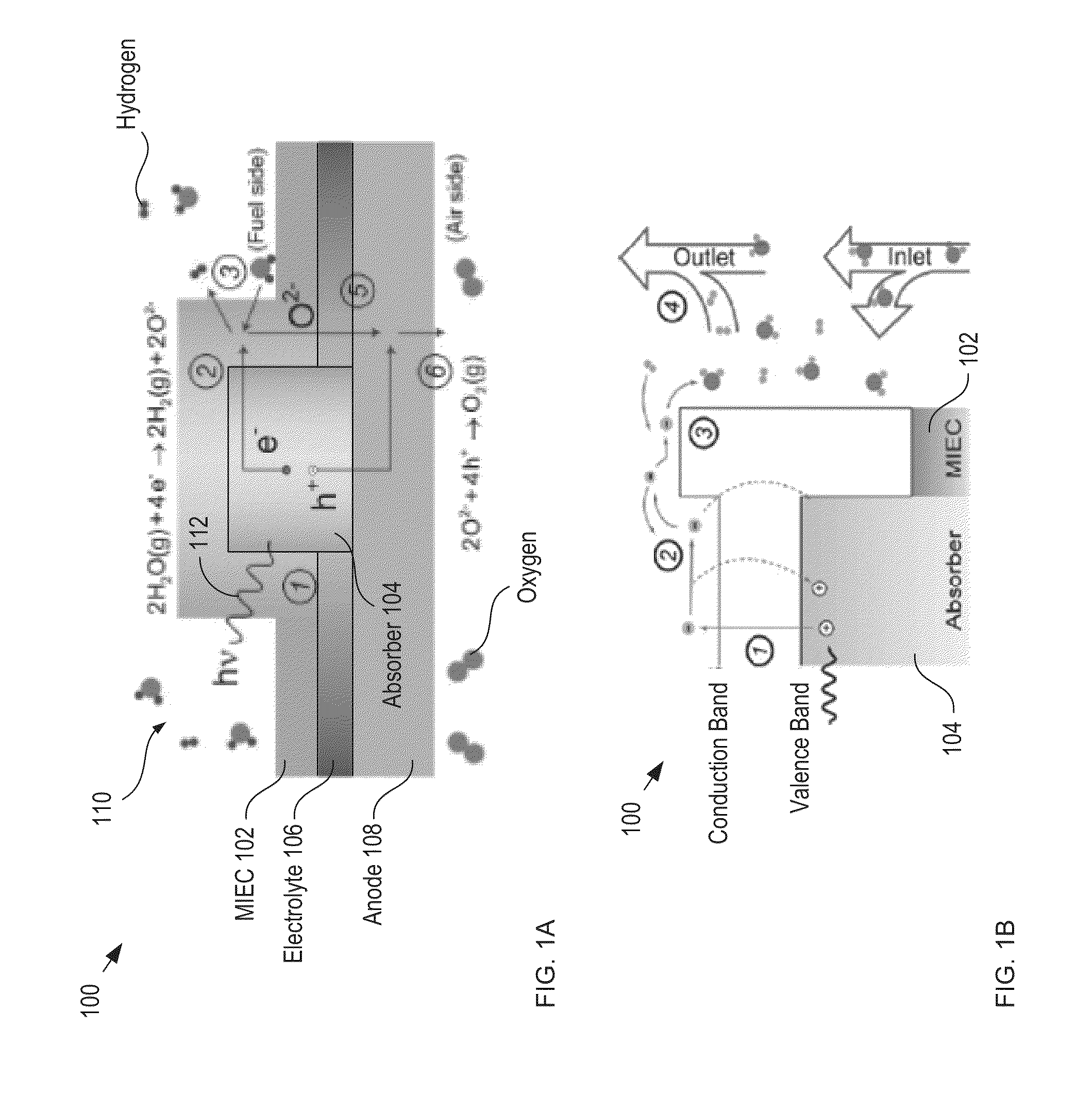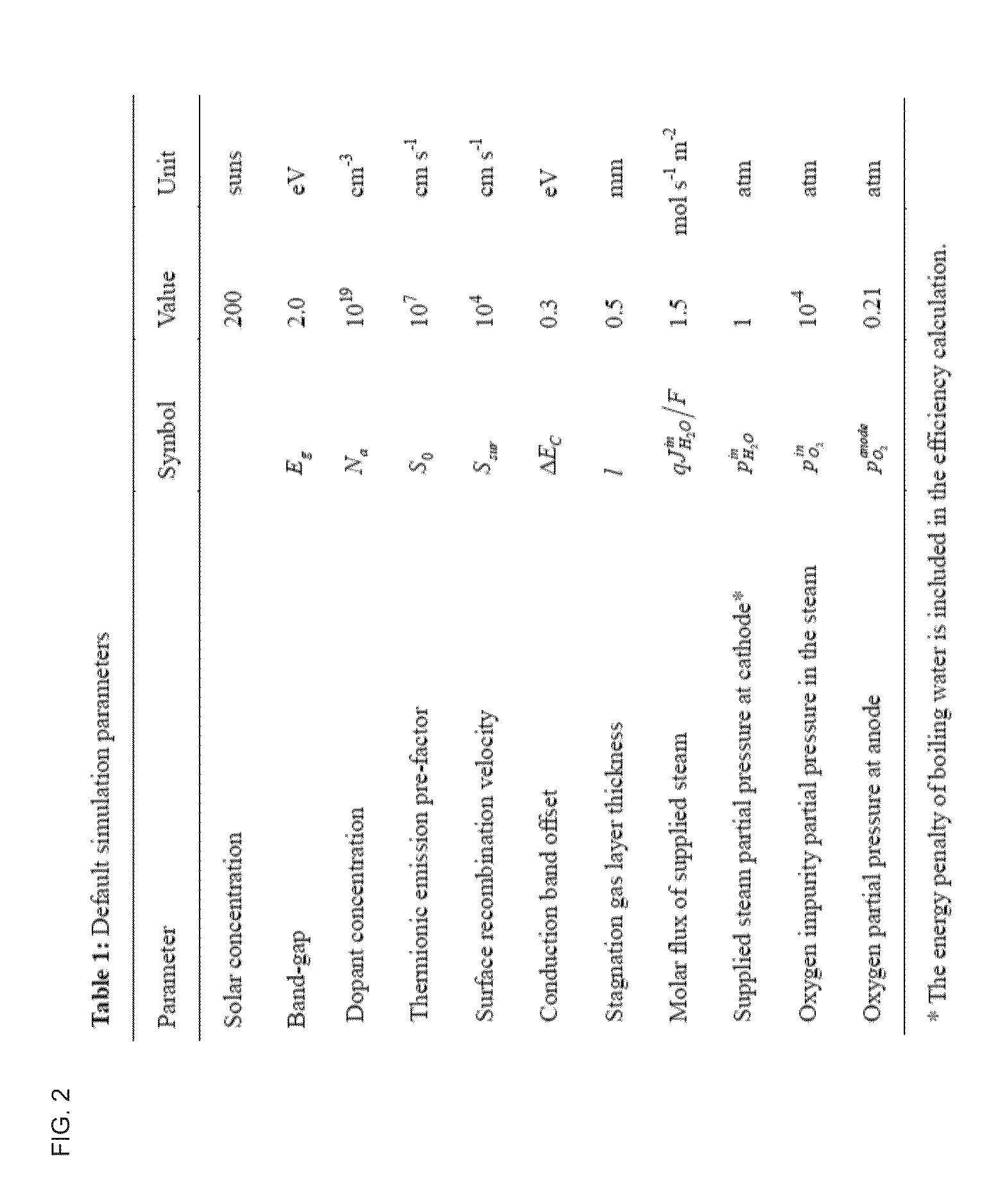Heterojunction elevated-temperature photoelectrochemical cell
a photoelectrochemical cell and elevated temperature technology, applied in the field of photoelectrochemical cells, can solve the problems of limiting electron transfer, impede electron transfer, and no one material system has proven ideal for these stringent requirements, so as to reduce the complexity of the system, improve the effect of carrier transport and electro-catalysis
- Summary
- Abstract
- Description
- Claims
- Application Information
AI Technical Summary
Benefits of technology
Problems solved by technology
Method used
Image
Examples
Embodiment Construction
[0044]FIG. 1A is a schematic shows a PEC in accordance with an illustrative embodiment of the present disclosure. PEC 100 comprises MIEC 102, light absorber 104, electrolyte 106, and anode 108. PEC 100 is a photocathode-based, oxygen-ion-conducting PEC.
[0045]MIEC 102 can comprise an n-type thin-film. In various embodiments, the n-type MIEC thin-film can comprise Sm-doped CeO2-δ (ceria). In other embodiments, the n-type MIEC thin-film can comprise doped BaZrO3 or a perovskite oxide. The MIEC 102 can be located between light absorber 104 and gas environment 110. MIEC 102 can be a wide band-gap MIEC, which enables most of the solar spectrum to pass through, facilitates (1) selective minority carrier emission from the light absorber to the gas phase molecules, (2) ionic transport to the counter electrode, and (3) passivation of the light absorber against corrosion. In the illustrative embodiment, the thin-film MIEC can have a bandgap greater than 3.5 eV such that 97% of the light passes...
PUM
| Property | Measurement | Unit |
|---|---|---|
| temperatures | aaaaa | aaaaa |
| temperatures | aaaaa | aaaaa |
| uphill band offset | aaaaa | aaaaa |
Abstract
Description
Claims
Application Information
 Login to View More
Login to View More - R&D
- Intellectual Property
- Life Sciences
- Materials
- Tech Scout
- Unparalleled Data Quality
- Higher Quality Content
- 60% Fewer Hallucinations
Browse by: Latest US Patents, China's latest patents, Technical Efficacy Thesaurus, Application Domain, Technology Topic, Popular Technical Reports.
© 2025 PatSnap. All rights reserved.Legal|Privacy policy|Modern Slavery Act Transparency Statement|Sitemap|About US| Contact US: help@patsnap.com



